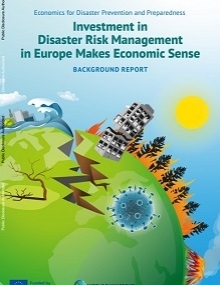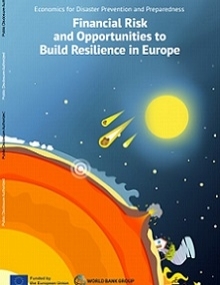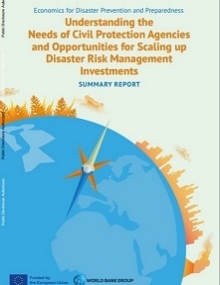Disasters can have devastating physical, social, and financial effects. In the past decade, Europe has seen major floods and earthquakes, while images of people seeking relief from record-breaking heatwaves are becoming commonplace. Between 1980 and 2020, natural disasters affected nearly 50 million people in the European Union, and caused on average an economic loss of €12 billion per year. Intensity and frequency of disasters is expected to grow as a result of climate change.
Economics for Disaster Prevention and Preparedness,developed by the European Commission and the World Bank, provides evidence to guide policy-makers and practitioners to make smart investments which can strengthen disaster and climate resilience in a way that delivers social, economic and environmental benefits.
Financial risk and opportunities to build resilience
This report reveals the scale of potential economic and fiscal cost of disasters in Europe. Impacts from major earthquakes and floods can exceed 7 to 17 percent of GDP in some EU Member States. Within the EU, the top-five countries with the highest average annual losses due to earthquakes are Cyprus, Greece, Romania, Bulgaria, and Croatia. For floods, the top-five countries are Romania, Slovenia, Latvia, Bulgaria, and Austria.
Governments shoulder a large share of post-disaster costs in Europe. Even in the best-case scenario, the report estimates that European governments are liable to finance on average around €16 billion of disaster costs each year through budget reallocations, borrowing, additional taxation and external assistance. When financing is unavailable or access is delayed, the impacts of natural disasters can be unnecessarily high.
Disaster risk finance can reduce and mitigate the full impact of such events. In some countries, access to disaster risk finance decreased the ratio of government liabilities to GDP from 0.58 percent to 0.46 percent.
Investment in disaster risk management in Europe makes economic sense
Analysis of 74 cases through the lens of the Triple Dividend of Resilience framework shows that the benefits of investing in resilience can substantially outweigh the costs, especially when combined with sustainable approaches. This is the case for risk reduction investments against hazards including floods, earthquakes, heatwaves, and wildfires.
Investing in early warning can help to save hundreds of lives and reduce long term negative health impacts, as proven in France after the 2003 devastating heatwave. In Vienna, modelled investment in green roofs yielded significant positive net benefits showing how cost-effective these solutions can be while enhancing quality of life for people.
Building institutional capacity to scale-up investments in prevention and preparedness
To strengthen institutional preparedness to deal with future events and respond to current challenges that many civil protections face today in Europe, there is a need to:
- Enhance technical and human capacities of civil protection agencies to prioritize, design, and implement DRM interventions
- Improve the availability of risk information on disaster and climate risks at different scales
- Share good practices and knowledge on prevention and preparedness to raise institutional and public awareness of the importance of investing in prevention and preparedness.
As countries recover from the impacts of the pandemic, there is an opportunity to take a greener, more resilient and inclusive development path. For a more resilient Europe, countries need to adopt comprehensive disaster risk finance strategies with diversified sources of funding at both national and EU level as well as invest in smart and cost-effective investments in disaster prevention and preparedness.
Related reports



Economics for Disaster Prevention and Preparedness in Europe - World Bank Group
Read More
No comments:
Post a Comment